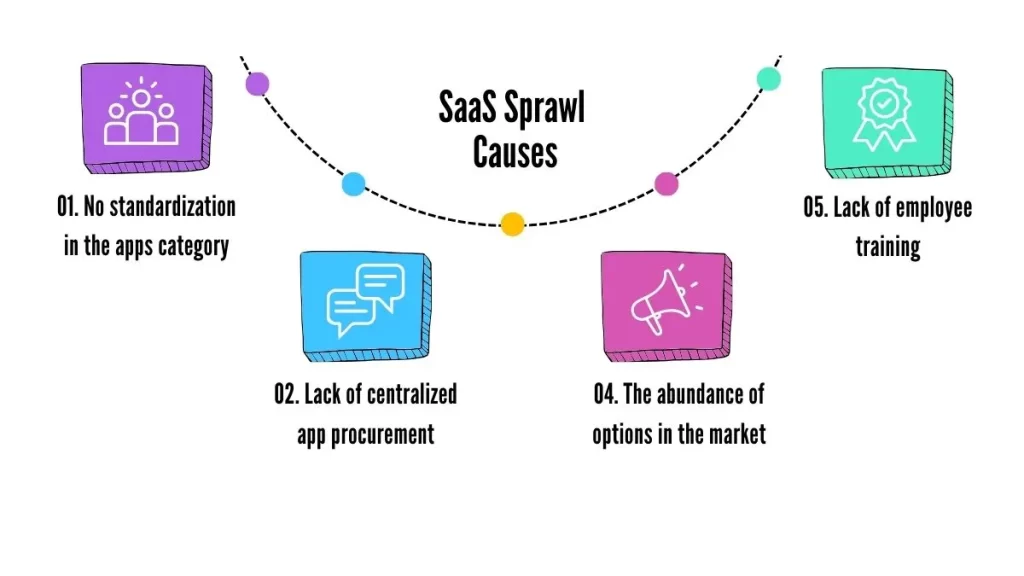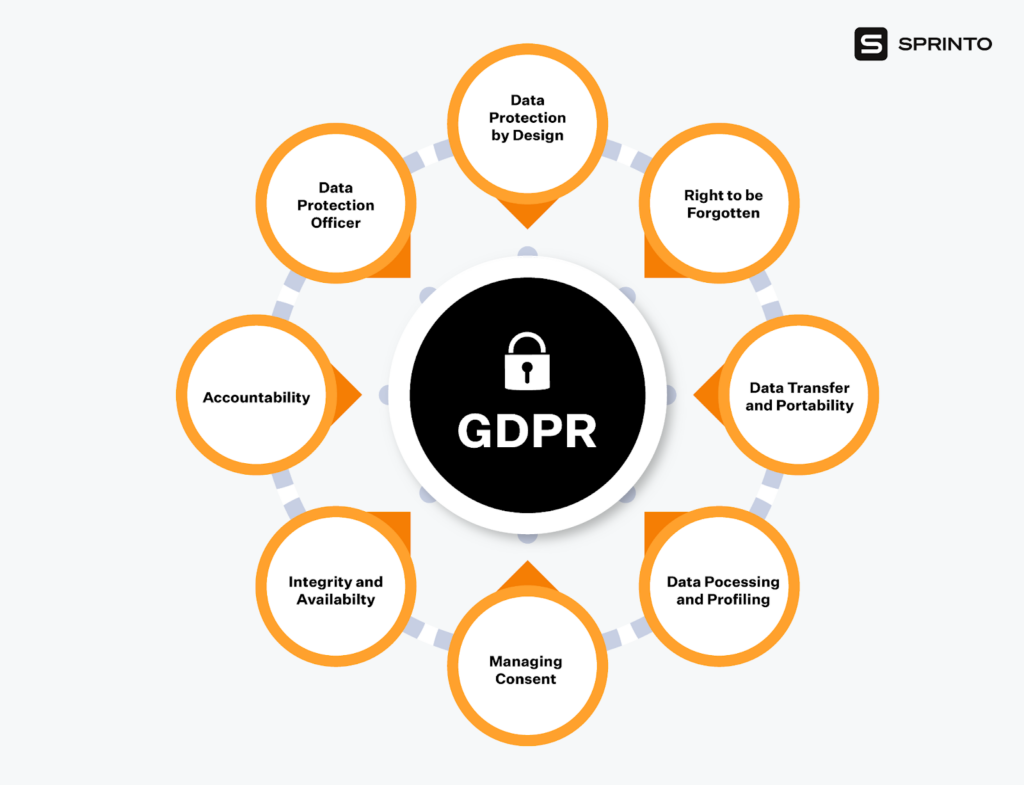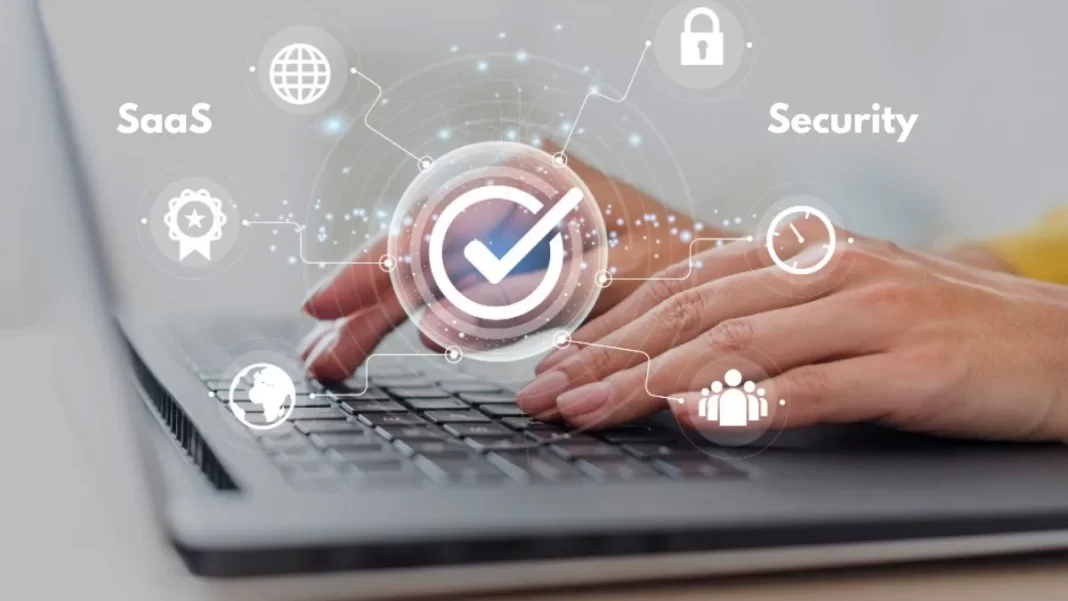The Explosion of SaaS and the Evolving Security Landscape
The adoption of Software-as-a-Service (SaaS) has skyrocketed in recent years, with no signs of slowing down. As organizations continue to migrate critical business functions to the cloud, the security implications are manifold. In 2024, the SaaS security landscape will be shaped by several key trends that IT leaders need to understand to protect their data and operations.
The Rise of SaaS Creates New Security Challenges
SaaS provides undeniable advantages like flexibility, scalability, and reduced costs. However, shifting data and infrastructure outside the traditional network perimeter creates new vulnerabilities. Organizations can no longer rely solely on legacy security tools designed for on-premise environments. The exponentially growing volume and variety of SaaS apps make it difficult to maintain visibility and control.
According to recent surveys, the average company uses over 120 different SaaS applications. 91% of IT leaders say SaaS sprawl has elevated their security risks. The decentralization of SaaS procurement magnifies these issues. As business units independently adopt SaaS apps to meet their needs, they may unknowingly introduce vulnerabilities.

Key SaaS Security Trends Shaping 2024
Several pivotal trends will impact SaaS security strategies in 2024:
Democratization of SaaS
The democratization of IT and SaaS procurement has allowed business units to independently adopt SaaS apps that make their teams more productive. However, this self-service approach creates significant security challenges. Business units often deploy apps without considering risks, configure them insecurely, and integrate them with other apps – all outside the visibility of central IT/security teams.
This lack of visibility leads to uncontrolled SaaS sprawl, expanding the attack surface through misconfigurations, risky integrations, and unmanaged accounts. With more apps operating in silos, security policies become fragmented. The organization’s data is dispersed across apps with inconsistent security controls.
To secure decentralized SaaS usage, new security and governance frameworks are essential. Central teams need solutions to provide visibility and controls across disparate apps. SaaS security posture management, enhanced identity governance, and SASE consolidation are key strategies to regain control over decentralized procurement.
Read More: How to Choose a SaaS SEO Agency for SQL and MRR Growth
Increased Reliance on Third-Party Applications: Trends & New Risks
The functionality of SaaS apps is greatly enhanced through integrations with third-party applications. CRMs integrate with marketing automation tools. Cloud storage syncs with productivity suites. Video conferencing links with calendar apps.
These integrations enable smoother workflows and expanded capabilities. However, they also significantly expand the attack surface. Each integrated app broadens the number of endpoints vulnerable to exploitation. Apps may integrate using insecure methods – granting more permissions than needed or exposing APIs without adequate authentication.
Third-party apps also introduce risks based on their security practices and posture. An otherwise secure SaaS app can be compromised via a vulnerable partner application. Integrations mean your data is flowing into third-party systems, with little visibility into how it is managed, secured, or used.
Vendors you integrate with may themselves integrate with additional downstream apps for extended functionality. This can create complex webs of interconnected apps, each introducing potential weaknesses.
Organizations should carefully vet third-party apps before integration and monitor their security posture over time. SaaS security platforms provide risk scoring of integrated apps and highlight excessive permissions. API interfaces should be locked down and integrations continuously reviewed to ensure they remain secure.
AI-Driven Threats
The rapid evolution of AI, especially generative models, opens up concerning new avenues for threat actors. As AI capabilities grow more sophisticated, attackers can leverage them to create increasingly convincing and tailored social engineering scams.
Deepfakes powered by generative adversarial networks (GANs) can manipulate audio and video to impersonate individuals – enabling new forms of voice phishing and video conferencing scams. Chatbots like ChatGPT can generate natural language, crafting personalized and context-aware phishing emails that better mimic trusted contacts.
These AI-enabled fakes appear authentic, bypassing traditional email security solutions reliant on signatures or basic heuristics. And GAN imagery improves continuously as models are trained on more data.
In the coming years, expect a rise in highly-targeted spear phishing exploiting personalized information to gain access to SaaS accounts. Forged identity documents could also bypass identity verification controls like multi-factor authentication.
Defending against AI-driven threats requires a combination of robust identity governance, user behaviour analytics, and machine learning techniques to detect anomalies in content or activity. Organizations should ensure security solutions have AI/ML capabilities specifically designed to counter emergent AI-enabled scams.
Read More: Tracking the 11 Crucial SaaS Marketing Metrics for Growth
Compliance Complexity with Global SaaS Deployments
Organizations operating globally face a complex patchwork of data regulations across regions. Stringent laws like GDPR in the EU, China’s Cybersecurity Law, and state privacy laws in the U.S. impose fines for non-compliance. The diversity of requirements makes compliance a headache.

For multi-national companies, the varying regulations often necessitate geographic segmentation of data within SaaS environments. Rather than one global instance, separate regional tenants isolate data as per local laws. This localization adds overhead as each geo-specific tenant requires its security controls, access policies, and compliance processes.
Security teams must navigate this complexity. They need tools that simplify compliance workflows across disparate tenants. Automating data discovery and classification is critical to mapping data with regulations. Monitoring controls specific to high-risk apps like Office 365 enhances compliance visibility. And access policies must align with geographic restrictions – ensuring EU data isn’t exposed beyond its borders.
Nimble compliance frameworks are required as regulations evolve continuously. Multi-national organizations should expect added complexity in securing global SaaS footprints and factor geography into identity, data, and application management strategies.
Geo-Specific Tenants Complicate SaaS Management
To adhere to data regulations in different countries and regions, many organizations opt to implement separate SaaS tenants for specific geographies. For example, a global company may have one SharePoint tenant for North America, another for Europe, a third for Asia Pacific, and so on.
Geo-specific tenants allow companies to isolate data residency and access controls to satisfy local compliance obligations. European customer data remains in the EU tenant, while Asia Pacific data stays within its tenant. This localization is often mandated by laws like GDPR.
However, geo-specific tenants significantly complicate SaaS management and security. Each tenant is an entirely separate instance that must be independently configured, have its own access policies, and maintain compliance with its respective regulations. Security teams have to implement and validate controls across multiple tenants per SaaS app.
Tenants sprawl quickly, especially as companies expand into new regions. Security tools like SaaS security posture management (SSPM) platforms become essential for gaining centralized visibility and control across decentralized tenants. SSPMs can roll out and monitor baseline policies across geo-specific instances.
Without proper tools and strategy, geo-tenants risk becoming compliance blind spots. Global organizations must approach localization systematically, using automation to manage regional variances while optimizing central visibility into global SaaS footprints.
Read More: 9 Marketing Automation Tips & Tools for SaaS Companies
ITDR: A Critical Safety Net Against Insider Threats
One of the most dangerous threats to enterprise SaaS environments comes from compromised privileged accounts and malicious insiders. If an attacker gains access to a user’s credentials, they can stealthily move laterally throughout an organization’s SaaS footprint.
Legacy controls like MFA struggle to detect compromised accounts. Once logged in, adversaries use sophisticated techniques to avoid detection – slowly expanding access and privileges before exfiltrating data or deploying ransomware.
This is where Identity Threat Detection and Response (ITDR) solutions provide a critical safety net. ITDR uses advanced analytics and machine learning to analyze user activity and detect subtle indicators of account compromise. By establishing baselines per user, role, and context, ITDR can identify anomalous behaviours that signal insider threats.
For example, impossible travel between geographically distant logins or unusual times of activity are red flags. Privileged actions like suspicious data downloads or changes in permissions also trigger alerts for investigation.
With ITDR, organizations gain a powerful last line of defence to catch compromised accounts and insider misuse that may penetrate traditional access controls. As threats grow more advanced, ITDR will become an indispensable part of SaaS security stacks in 2024 and beyond.
API Security Takes Center Stage
Application programming interfaces (APIs) enable SaaS integrations and underpin most modern architectures. But they also expose a massive attack surface which remains dangerously undersecured at most organizations.
APIs lack the rigorous access controls applied to the application itself. Authentication is often via easily exploited keys which grant broad access. APIs also enable indirect attacks on integrated apps – if one API is compromised, attackers can pivot to exploit connected systems.
As usage and dependence on APIs accelerate, so do API-based attacks. The most common include injection of malicious code, denial of service, and extraction of data in transit. Without remediation, API vulnerabilities will become the foremost vector for SaaS exploitation.
Securing APIs requires a focused strategy including pen-testing to identify flaws, access control via OAuth, granular privileges, input validation, encryption of data flows, and runtime monitoring to detect anomalies. API gateways help control and monitor traffic.
API security must move centre stage in 2024. Organizations relying on integration-heavy SaaS ecosystems are exposed without rigorous API protections in place.
Read More: The Complete Guide to SaaS Product Marketing
Security Mesh Architecture Gains Traction
As SaaS environments grow more complex, security teams struggle to maintain consistent visibility and control. Security mesh architecture has emerged as a strategy to unify security across the heterogeneous mix of apps, APIs, microservices, data, and infrastructure.
Security mesh distributes controls across service meshes, API gateways, identity providers, and other integration points. This interconnected web of capabilities enhances visibility while reducing reliance on centralized security stacks.
Distributed access policies and decentralized identity improve agility. Automation ensures consistent enforcement wherever assets reside – on-prem, cloud, SaaS or edge. Open standards improve interoperability across products.
In 2024, expect security mesh adoption to accelerate as organizations modernize strategies for cloud-native realities. The dispersed nature of SaaS and multi-cloud lend themselves to a decentralized security model.
To maximize value, SaaS security posture management, ITDR, and API gateways should align with mesh principles. This will provide unified policy enforcement, continuous verification, and reduced vendor sprawl. The end state is consistent security everywhere with reduced complexity.
Shifting Focus to Risk Management
Traditionally, SaaS security has relied on binary pass/fail assessments of configurations and compliance checks. However, as the threat landscape evolves, these static models are inadequate. Organizations need to shift towards more adaptive frameworks.
In 2024, expect risk-based security practices to become mainstream. Rather than chasing point-in-time compliance, the focus will turn to continuous contextual risk management. Security teams will leverage automation and analytics to determine risk scoring per user, app, and environment.
Adaptive controls then map privileges, access, and monitoring to match risk profiles and business needs. Lower-risk scenarios permit more permissive policies, while high-risk situations trigger stringent controls and enhanced behaviour monitoring.
The end state is contextual security that adapts dynamically based on identified risks. This allows smoother business workflows when safe, but locks down controls when threats emerge.
Organizations that modernize to risk-based models can secure SaaS environments without impeding productivity or agility. However, it requires security leaders to move beyond legacy practices and embrace next-generation approaches oriented around intelligence and automation.
Read More: A Comprehensive Guide to PaaS, SaaS, IaaS, and CaaS Cloud Computing Models
Progress on Zero Trust
Zero trust has quickly become a security buzzword, but many implementations remain superficial. In 2024, organizations will need to ingrain zero trust principles more comprehensively into SaaS environments.
What began as a network-centric model must expand to cover identities, endpoints, data, and applications. granular micro-segmentation, least privileged access, and continuous re-verification should be applied across the entire SaaS architecture.
For identities, multi-factor authentication and tighter access controls will be table stakes. User behaviours and risk profiles will determine adaptive access policies. To secure data, expect more use of rights management, tokenization, encryption, data loss prevention, and cloud access security brokers.
Success requires moving beyond point solutions. Holistic zero-trust architectures will leverage orchestration and automation to consistently enforce distributed policies. SASE, ITDR and SSPM platforms will underpin these integrated models.
Purpose-built zero-trust offerings must also advance. Capabilities like micro-segmentation, dynamic policy calculation, and smart encryption will aim to deliver zero trust at the workload level. The end goal is contextual security flexible enough for cloud-native environments.
Remote Work Driving New Approaches to Secure Access
The shift to remote work has fundamentally changed how users access SaaS environments. Employees regularly connect from personal, unmanaged devices like home PCs, tablets, and smartphones. This reliance on bring-your-own-device (BYOD) works against traditional network security models.
When workers log into corporate SaaS accounts from home devices, it greatly expands the attack surface. Personal devices lack oversight, are rarely patched, and may have compromised apps or malware present. A vulnerability on one home PC puts all that user’s corporate SaaS access at risk.
Securing remote access in this environment requires a zero-trust approach. Organizations need visibility into device health, location, and behaviours during login. Contextual access policies then permit or restrict access accordingly – blocking suspicious logins until identity is verified.
SASE and ZTNA solutions will be key for software-defined, zero-trust access control. Combined with strong identity governance and multi-factor authentication, they can provide secure remote access without hampering productivity.
The risks of the work-from-anywhere era require security leaders to rethink old network-centric models. The solutions for cloud-first, mobile-first workforces will be found in intelligent identity frameworks and cloud-delivered access management.
Read More: The Complete Guide to Funding Your SaaS Startup
Navigating the SaaS Security Maze: Strategies and Solutions
Organizations require a proactive, layered approach to mitigate the array of SaaS security risks on the horizon. Here are the key elements of a robust SaaS security strategy for 2024:
The Role of SaaS Security Posture Management
SaaS Security Posture Management (SSPM) platforms will be critical for gaining visibility and control across disparate SaaS environments. Key capabilities include:
- Auto-Monitoring Configurations: Continuously monitor settings to detect risky changes and configuration drift.
- Baselining and Best Practices: Establish security benchmarks for SaaS apps and ensure compliance.
- Third-Party App Oversight: Monitor permissions and activity of integrated third-party apps.
- User and Device Monitoring: Gain visibility into SaaS access points across user identities and endpoints.
Building a Layered Security Approach
A Single solution cannot cover the breadth of SaaS attack vectors. Organizations need layered defences:
- ITDR for Threat Detection/Response: Identity-centric solutions detect compromised accounts and insider threats based on unusual user activity.
- Cross-Team Collaboration: Security teams must partner with business units for successful decentralized SaaS management.
- Continuous Assessment: Regular audits using automated tools are needed to verify security controls and identify gaps.
- Zero Trust Implementation: Apply zero trust principles for access control, encryption, and least privilege.
- Geo-Tenant Management: Meeting diverse regulations requires proper tenant segmentation, configuration and oversight.
- API and Integration Security: Rigorously control API access, enforce OAuth, validate input, and encrypt data.
- Secure Remote Access: Use ZTNA, device management, and contextual controls to secure personal device usage.
Additional Strategies
- Adopt adaptive security models based on risk scoring and business context.
- Embrace automation, analytics, and machine learning where possible to improve threat detection and response capabilities.
- Make identity and access management the security cornerstone.
- Maintain basic security hygiene across SaaS environments and cultivate an organizational security culture.
Read More: Best Social Media Channels for SEO of SaaS Companies
The Road Ahead: Adapting to the Future SaaS Landscape
As the volume and variety of SaaS apps continue multiplying, the attack surface will expand exponentially. Threat actors are already taking advantage of new attack vectors emerging from trends like work-from-home and generative AI. To stay ahead of these threats, organizations must take proactive measures:
- Continuously monitor the threat landscape and adjust strategies accordingly.
- Make prudent investments in robust SaaS security tools and platforms.
- Promote collaboration between security teams, IT, and business units.
- Develop flexible security frameworks based on context and risk scoring.
- Embrace Zero Trust both philosophically and practically.
- Isolate data and access controls to meet geo-specific regulations.
- Incorporate automation, machine learning, and AI where possible while focusing human capital on higher-order security challenges.
- Recognize identity as the new security perimeter and manage it accordingly.
- Foster a strong foundation of cloud security hygiene and cybersecurity culture.
The SaaS landscape will never stop evolving. However, by understanding key trends and responding with adaptive security strategies, organizations can confidently embrace cloud services while keeping their data and operations secure. During this time of rapid change, resilience depends on vigilance, preparation, and unity across business and technical teams. With proactive planning and coordinated effort, companies can move forward securely in the knowledge that their critical assets are protected from even the most sophisticated threats.

